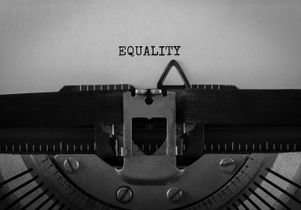Sizing up the measurable good of affirmative action

Want to start an argument at your next dinner party? Utter the words "affirmative action," and then bear down on your salad. The issue is particularly divisive because many people regard it as zero-sum: If your kid gets into that exalted university, mine doesn't.
But an economic model, built by UCLA Anderson's Bernard Herskovic and USC Marshall's Joao Ramos with a Brazilian college admittance program in mind, suggests affirmative action programs can boost economic output, if done right. That's because those who get a boost from affirmative action gain more—in added income, greater economic opportunity and increased social mobility—than is lost by those who might otherwise have filled those spots.
Society profits when all highly skilled applicants can attend college regardless of income, the authors write in a working paper. But traditional college admissions are economically inefficient. By relying on high school grades and test scores, they often fail to identify highly skilled applicants from low-income families who are unable to make the kinds of educational investments—in SAT prep classes, after-school enrichment programs and the like—that are available to wealthy families. Worthy low-income applicants who might benefit the most from higher education can get crowded out.
"Affirmative action tackles this source of inefficiency because it alters the college demographics by admitting more high-skilled low-income students and fewer low-skilled high-income ones," they write.
The authors devised a macroeconomic model that measures affirmative action's impact on an economy's total output (or gross domestic product), social welfare and upward mobility. The model takes into account a child's innate ability and the acquired ability, or human capital, he or she gains through education. Then it measures how the two influence the child's eventual income. In the model, a successful affirmative action policy is one that improves the pool of students admitted to college without giving parents an incentive to invest less in education or try to game the system.
To understand the implications of their model, Herskovic and Ramos examined an affirmative action program adopted by Brazil in 2012 that was designed to address inequities in admissions to the country's highly competitive public universities. The policy set aside 50 percent of the slots for graduates of public high schools, which educate 90 percent of youths but send only a fraction to public university, and reserved half of those spots for low-income public school graduates.
For those who get preferential treatment, such a policy delivers clear-cut benefits, the model suggests. They get a boost in income, which enables them to significantly out-earn their parents—an indicator of upward mobility. But, the authors say, the Brazil program sets aside too many slots for public school applicants overall, giving wealthy parents an incentive to switch their children to public schools, especially if the child is close to the cut-off. This makes admissions less efficient and hurts total economic output.
An affirmative action program that helps its beneficiaries and still gives a boost to the overall economy needs to be narrowly focused, the authors conclude. Applicants should get preferential treatment based on their income, not where they went to high school. Only students from families in the lowest income bracket (the lowest quintile, in the Brazilian example) should benefit. The policy also would add only a modest bonus to students' admission scores. Using the Brazilian program in the model, such a policy could increase total economic output by about four-tenths of a percent and significantly increase total welfare, a measure of the society's overall standard of living, by about 2.4 percent.
More information: Promoting Educational Opportunities: Long-Run Implications of Affirmative Action in College Admissions. papers.ssrn.com/sol3/papers.cf … ?abstract_id=2628303
Provided by University of California, Los Angeles















